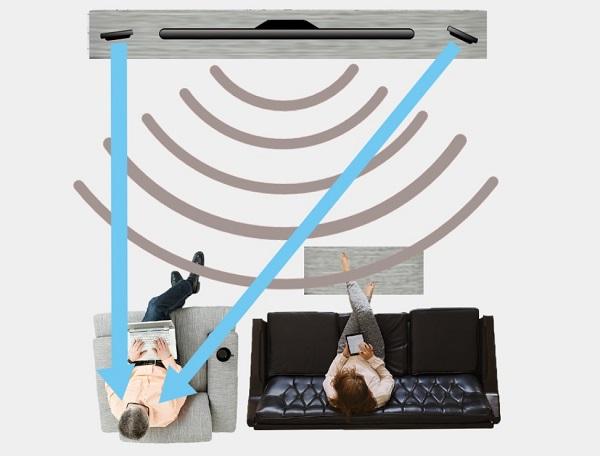Is Ultrasound a Sound Whose Time Has Come?

The underlying technology of using ultrasound to yield audible signals was first developed in the 60s. Inventors observed that a high-power beam of modulated ultrasound (at perhaps 100 dB), acting as a carrier signal, changes the speed of sound as it passes through air. The air's transfer characteristic is nonlinear and it acts as a passive demodulator that extracts the modulated signal. Voila! The ultrasound itself is far above the audible range, but thanks to the predictable properties of air, audible sound is heard only along the beam or from a surface that the beam strikes. The wavelength of the carrier signal is very short; hence the beam is very narrow. Cool stuff.
Early applications were limited by poor sound quality and high cost. Then in 1998, Dr. F. Joseph Pompei, working at MIT, perfected an improved transducer with low distortion. Marketed as the Audio Spotlight and sold by Holosonics, this technology is used in a number of applications where unique audio distribution is needed. For example, retail stores, galleries, exhibits, and museums use Audio Spotlight to place sound where it's wanted, while preserving silence where it isn't wanted. Cool.
A similar technology known as HyperSonic Sound was first invented by Woody Norris in 1996. Two piezoelectric transducers generate two ultrasonic beams of different frequencies; the interference pattern at the beam's crossing point yields audible sound. Also very cool.
And now comes HyperSound Clear, hoping to aim its beams in your home theater. HyperSound Clear, from Turtle Beach, uses Norris' technology to address a very specific issue: hearing loss. Like it or not, our hearing acuity ages along with the rest of our bodily infrastructure. Having difficulty understanding movie dialogue or hearing the intricacies of your favorite music? HyperSound Clear has some ultrasonic beams ready to help.
The system comprises an amplifier and two bookshelf-speaker-sized emitters. Sit in the sweet spot of the 44 kHz beams and you'll hear, for example, movie dialogue at a boosted level, thus improving intelligibility. Kind of like wearing a pair of headphones, minus the headphones. The kit is priced at $1,500 and will be available this Fall. It will be demonstrated and sold in audiology offices; the system's response can be customized by a hearing professional for the listener's need. If things pan out, Turtle Beach could consider a lower-cost version or one folded into a traditional soundbar.
The market for such a system is twofold: older listeners, obviously, as well as the not obvious demographic of many younger listeners who, it turns out, are suffering from premature hearing loss thanks to those years of cranking up their earbuds to 11.
So, sound from ultrasound. A technology that's poised for a market breakout, to address the needs of potentially millions of customers? Or something cool that's destined to relative obscurity? The next electric light? Or mood ring?






























































